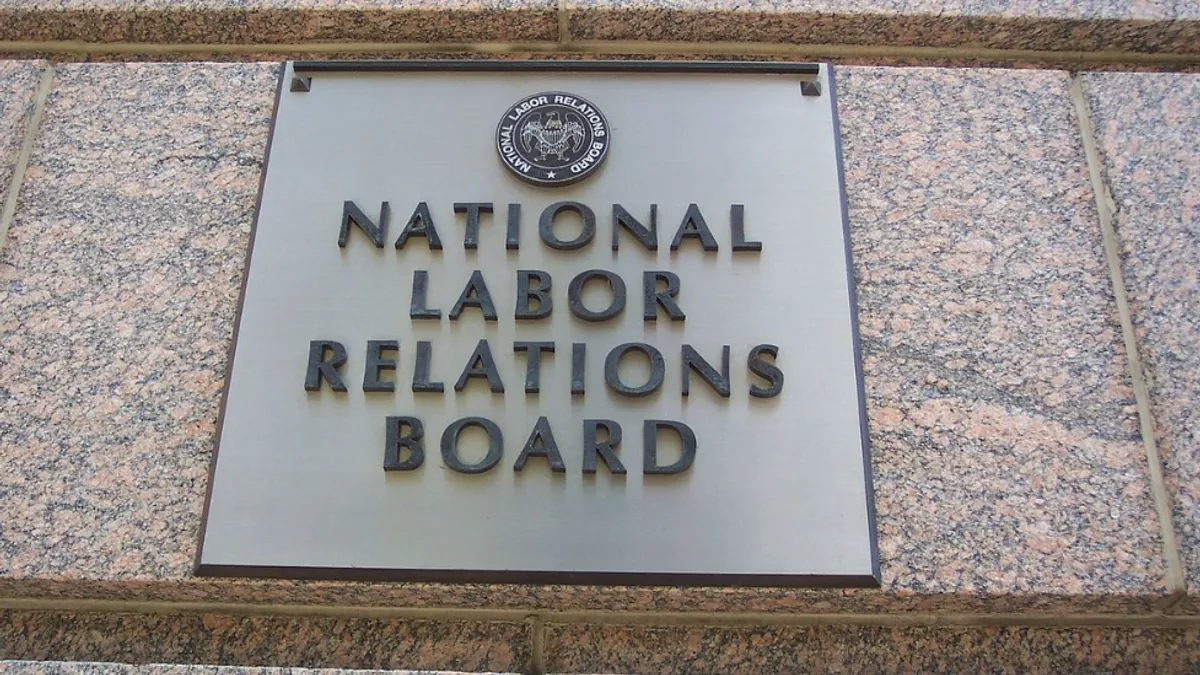Dive Brief:
- The National Labor Relations Board confirmed plans Wednesday to publish in August a final rule updating the standard for determining when two employers may be considered joint employers under the National Labor Relations Act.
- NLRB previously slated August as its target date for a joint employer rule upon the publication of the agency’s fall 2022 regulatory agenda. The board’s proposed rule, issued last September, would revive the standard articulated in its 2015 Browning-Ferris Industries decision. The period for public comments on the proposed rule closed Dec. 7.
- Under the proposed rule, two or more employers would be considered joint employers of a group of employees if the employers share or codetermine essential terms and conditions of employment. NLRB would consider both direct evidence of control as well as evidence of reserved, or indirect, control over these terms and conditions when analyzing joint employer status.
Dive Insight:
The battle to revise NLRB’s joint employer regulations constitutes a lengthy, partisan tug-of-war over the course of nearly 10 years.
In the 2015 Browning-Ferris decision, a Democratic-majority NLRB held that a recycling plant operator was a joint employer of a staffing agency’s employees. The board said it would consider both an employer’s “reserved” and “indirect” control over an employee’s essential terms and conditions of employment, in addition to the “direct” and “immediate” control analyzed by previous boards.
After NLRB’s composition shifted following the 2016 U.S. presidential election, the board set about trying to undo Browning-Ferris. First, it issued a 2017 decision in Hy-Brand Industrial Contractors, Ltd., and Brandt Construction Co., which overturned Browning-Ferris and reinstated the board’s prior precedent that an employer would only be deemed a joint employer if it exercised direct control over employment terms and conditions.
Second, a Republican-majority board issued a final rule in 2020 aimed at codifying its “direct and immediate control” standard, which also exclusively defined “essential terms and conditions of employment” to include wages, benefits, hours of work, hiring, discharge, discipline, supervision and direction.
These efforts would be undone, however, thanks to a series of developments.
NLRB vacated its Hy-Brand decision in 2018 over ethics concerns involving a board member who participated in that decision. Later that year, the U.S. Circuit Court of Appeals for the District of Columbia held in favor of the NLRB — which had been sued by the employer in Browning-Ferris — finding that the board could adopt a joint employer standard that considered reserved and indirect control.
The 2020 final rule faced its share of legal challenges as well, but another presidential election brought further change. In 2022, the new Democratic majority at NLRB proposed to rescind and replace the 2020 rule.













